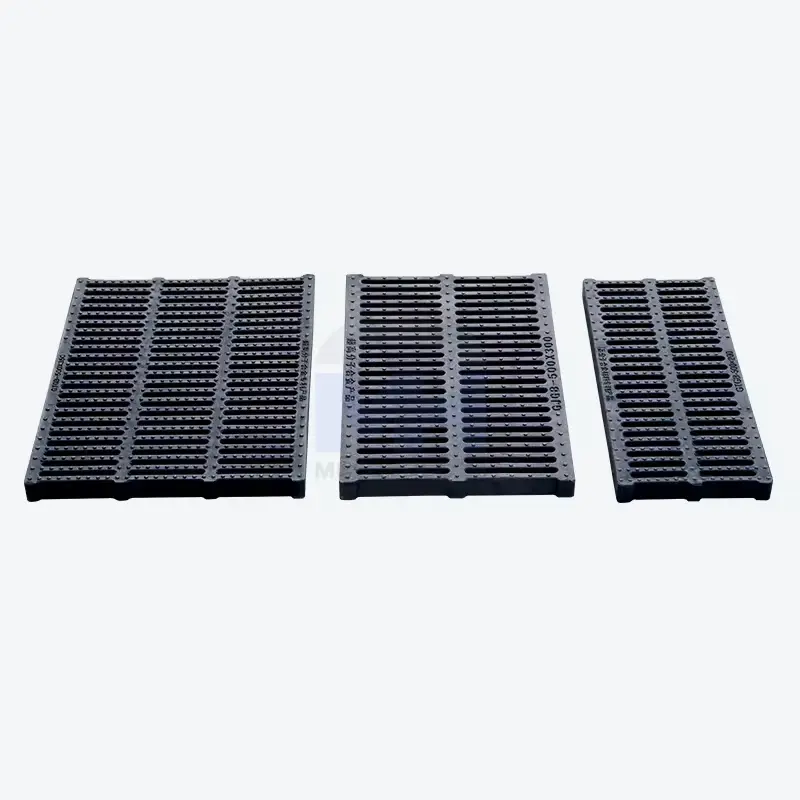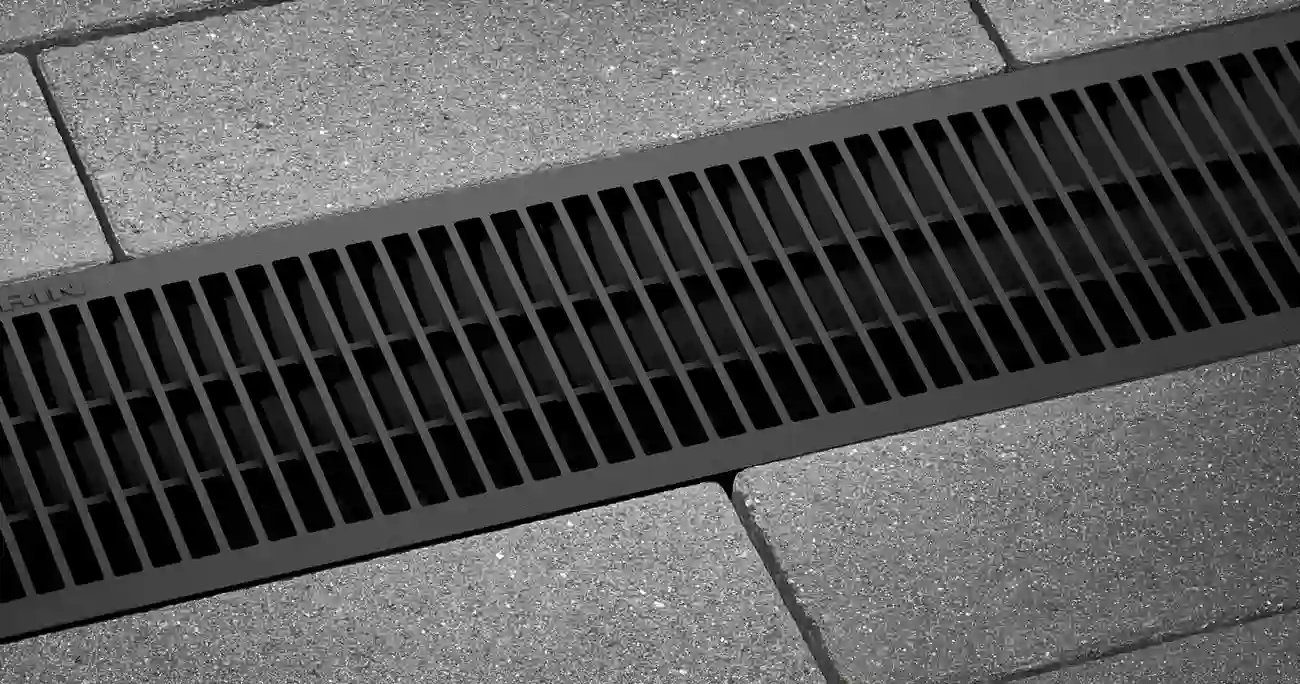
Table of Contents
Introduction
Plastic drainage grates are a practical and affordable way to control water runoff around homes, driveways, and commercial properties. These lightweight yet durable grates offer reliable protection against surface water accumulation, erosion, and structural damage. This guide will teach you how to install plastic drainage grates effectively and safely for maximum water flow and performance longevity.
1. Planning and Design Considerations
Before starting the installation, carefully assess the drainage requirements of your site. Key considerations include:
- Rainfall intensity: How much water is expected during peak rain?
- Slope and grade: Ensure gravity helps the water move naturally.
- Soil type: Determines how quickly water drains or pools.
- Utility lines: Avoid damaging existing pipes or cables.
- Regulations: Confirm compliance with local drainage and building codes.
Design a layout that uses gravity to direct runoff into collection basins, storm drains, or outfalls. Use mapping tools or CAD software for larger or commercial projects involving plastic drainage grates. It’s also wise to include an overflow path for extreme rain events.
2. Selecting the Right Plastic Drainage Grates
Choose drainage grates rated for your application:
- Pedestrian areas: Light-duty plastic grates are sufficient.
- Driveways or parking lots: Medium to heavy-duty grates are needed.
- Industrial zones: Choose grates with reinforced frames.
Look for UV-stabilized, corrosion-resistant materials that can withstand various weather conditions. Also, ensure compatibility with the channel drain system. Some grates offer decorative options that blend into surrounding surfaces, adding aesthetic appeal to functionality.
3. Trench Preparation
Use stakes and string to mark your trench line. Excavate the trench to a depth of 6–8 inches depending on your system. The trench width should be at least double the channel width.
- Add a 2–3 inch gravel bed: This promotes sub-drainage and prevents settling.
- Compact the base layer: This stabilizes the structure and extends the system’s life.
Be precise here—an uneven base can lead to poor water flow and long-term structural issues, especially when using plastic drainage grates.
4. Channel and Grate Installation
Install the plastic drainage channel sections into the trench, ensuring a consistent downhill slope of at least 1% (1/8 inch per foot).
- Connect channels using manufacturer-supplied connectors.
- Seal joints with silicone or gaskets to ensure water-tightness.
- Fit the grates snugly over the channel tops.
Check levels regularly to ensure smooth flow and alignment. Avoid any dips or high spots, as these can obstruct water movement.
5. Securing the Drainage Grates
Once aligned, attach the plastic grates using clips or screws provided by the manufacturer. Make sure the top of the grate is flush with or just below the surrounding ground level.
This prevents trip hazards and encourages smooth surface runoff. For driveways, it’s essential the grates can bear vehicle weight and stay locked in position. In areas with heavy foot traffic, ensure the grates have anti-slip surfaces.
6. Backfilling and Surface Finishing
Backfill with gravel or compacted soil around the trench:
- Compact in layers to prevent future settling.
- Blend the surface with nearby landscaping or pavement.
- Add decorative elements like turf, mulch, or stone for aesthetic integration.
In paved areas, you may need to pour concrete or apply asphalt around the drain to restore the finish and ensure surface-level consistency. Allow the area to settle for at least 24 hours before applying any loads.
7. Maintenance Tips for Long-Term Performance
Plastic grates are low-maintenance, but occasional upkeep ensures peak performance:
- Clean debris such as leaves, trash, and silt regularly.
- Flush the channels with a hose if blockages occur.
- Inspect after storms to check for damage or displacement.
- Tighten fasteners periodically to prevent grate movement.
A quarterly maintenance routine is recommended, especially in areas with heavy rainfall or tree cover. In commercial areas, consider monthly inspections.
8. Application Scenarios for Plastic Drainage Grates
Plastic drainage grates are used in a wide range of residential, commercial, and public infrastructure settings:
- Homeowners install them around patios, garages, and yards.
- Retail centers rely on trench systems in parking lots.
- Industrial facilities use them in wash-down areas or storage yards.
- Public parks and walkways use decorative grates for stormwater control.
Their affordability and ease of installation make them a popular choice for both DIYers and professionals.
9. Bulk Procurement and Sourcing Considerations
For contractors, landscapers, or municipal planners, buying in bulk is often cost-effective:
- Request samples to test compatibility and durability.
- Compare suppliers for quality, price, and warranty.
- Look for certifications like ISO, CE, or SGS for assurance.
- Consider lead times and shipping if sourcing internationally.
MHCOVER.com offers bulk plastic drainage grates at competitive prices, with customization options to match your project’s needs. Partnering with a trusted supplier ensures consistent quality and timely delivery.
10. Common Mistakes to Avoid
Avoiding common pitfalls ensures system reliability:
- Insufficient slope: Can lead to stagnant water.
- Poor base compaction: Causes shifting and misalignment.
- Improper backfilling: Allows water to bypass the drain.
- Loose grates: Create safety hazards and reduce effectiveness.
Additionally, failing to follow local regulations can lead to fines or require costly rework. Always check with local authorities before installation.
11. Cost Estimation and Budget Planning
When budgeting for a drainage project, consider the following cost elements:
- Grate type and quantity: Lightweight plastic grates are cheaper than reinforced ones.
- Installation tools and accessories: Includes connectors, sealants, and compaction tools.
- Labor costs: DIY installation saves money, but complex jobs may require professionals.
- Shipping fees: Especially relevant for bulk orders.
Plan for a 10% contingency to cover unexpected adjustments or repairs. Include maintenance costs in long-term budgets, especially for commercial applications.
12. Conclusion
Installing plastic drainage grates is an effective, budget-friendly solution for surface water management. With correct planning, proper installation, and regular maintenance, these systems enhance safety, reduce erosion, and protect properties from flooding.
Whether you’re a homeowner or a professional contractor, plastic drainage systems offer flexibility and long-term value. Choose the right system, follow this guide carefully, and enjoy superior water control for years to come.
For product support or bulk quote inquiries, visit MHCOVER.com to explore high-quality drainage solutions backed by years of industry expertise.

